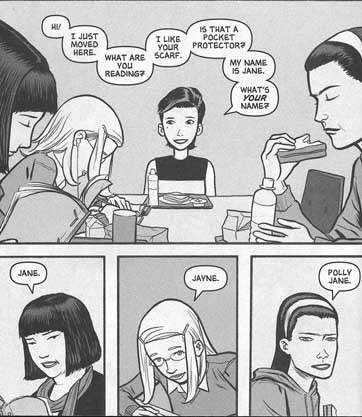Publisher: Knopf Books for Young Readers (2005)
Media Format: Book
Genre: Homosexuality, Speculative Fiction
Selection Source: Teen Reads
Reading Audience: Junior High+
Reading Recommendation: 3 ***
Curriculum Connection: Tolerance
Summary
This novel is different from most teen novels that deal with homosexuality. By working within the speculative fiction genre, Levithan bypasses most of the issues that teenage homosexuals are faced with; grappling with one's sexuality, coming out of the close, guilt, and isolation. By normalizing homosexuality in this one town, he allows us to consider the way things could be. Paul is gay. He has known he was gay since kindergarten. His parents accepted the news that he was gay with the same disinterest some parents might feel if the kindergarten teacher told them their son prefers soccer to dodgeball. It doesn't end in Paul's household. The star quaterback is a transvestite who gives new meaning to the the phrase homecoming queen. Against this backdrop we read about the love story between Paul and Noah. The most unusual thing about it is how normal it is. We are allowed to forget about the homosexuality and take it for what it is, a romance between two individuals who have strong feelings for each other, but their immature love leads them to do things that have the potential to alienate each other.
Evaluation
This book works. It does what it sets out to do which is to make a "normal" love story about two gay boys. It also does what all books offering a minority viewpoint should do, it allows us to feel what the protagonist feels, and see the world as the protagonist sees it. In my view, books like this are more powerful than divisive arguments about homosexuality. It appeals to our sense of empathy rather than intellect, and in the end we are happy when Paul inevitably gets the boy.

